Shane (film)
7.8 /10 1 Votes
| 7.8/10 IMDb Duration Language English | |||||||||||||||||||||||||||||||||
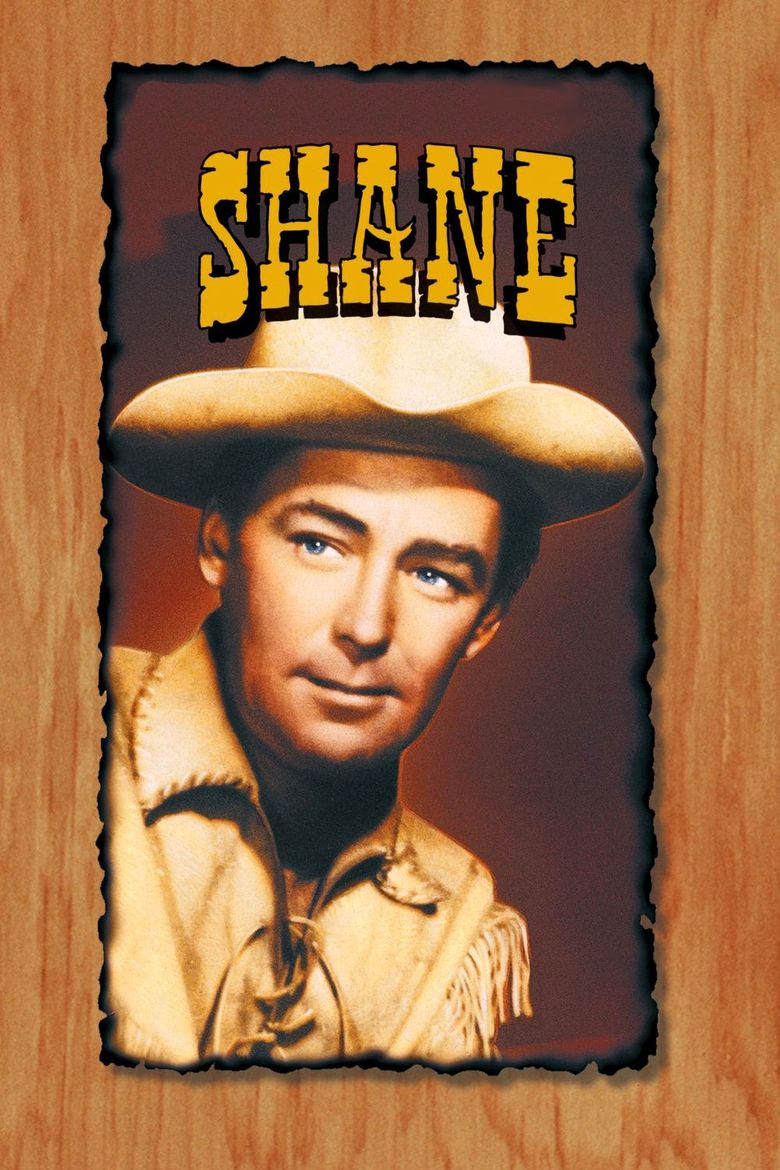 | ||||||||||||||||||||||||||||||||||
Release date April 23, 1953 (1953-04-23) Writer A.B. Guthrie Jr. (screenplay), Jack Sher (additional dialogue), Jack Schaefer (based on the novel by) Screenplay Alfred Bertram Guthrie, Jack Sher Cast (Shane), (Marian Starrett), (Joe Starrett), Brandon De Wilde (Joey Starrett), (Jack Wilson), (Chris Calloway)Similar movies Tagline The Greatest Story Of The West Ever Filmed! | ||||||||||||||||||||||||||||||||||
Shane 1953
Shane is a 1953 American Technicolor Western film from Paramount Pictures, noted for its landscape cinematography, editing, performances, and contributions to the genre. The picture was produced and directed by George Stevens from a screenplay by A. B. Guthrie Jr., based on the 1949 novel of the same name by Jack Schaefer. Its Oscar-winning cinematography was by Loyal Griggs. Shane stars Alan Ladd and Jean Arthur in the last feature (and only color) film of her career. The film also stars Van Heflin and features Brandon deWilde, Jack Palance, Emile Meyer, Elisha Cook Jr., and Ben Johnson.
Contents
- Shane 1953
- Plot
- Production
- Technical details
- Reception
- Influence on later works
- Awards and honors
- Copyright status in Japan
- References

Shane was listed No. 45 in the 2007 edition of AFI's 100 Years...100 Movies list, and No. 3 on AFI's 10 Top 10 in the 'Western' category.

Plot

Shane (Alan Ladd), a skilled, laconic gunfighter with a mysterious past, rides into an isolated valley in the sparsely settled Wyoming Territory, some time after the Civil War. At dinner with local rancher Joe Starrett (Van Heflin) and his wife Marian (Jean Arthur), he learns that a war of intimidation is being waged on the valley's settlers. Though they have claimed their land legally under the Homestead Acts, a ruthless cattle baron, Rufus Ryker (Emile Meyer), has hired rogues and henchmen to harass them and drive them out of the valley. Starrett offers Shane a job, and he accepts.

At the town's general store, Shane and other homesteaders are loading up supplies. Shane enters the saloon adjacent to the store, where Ryker's men are drinking, and orders a soda pop for the Starretts' son, Joey (Brandon deWilde). Chris Calloway (Ben Johnson), one of Ryker's men, throws a shot of whiskey on Shane's shirt. "Smell like a man!" he taunts. Shane doesn't rise to the bait, and leaves to the taunts of Ryker's men. On the next trip to town, Shane returns the empty soda bottle to the saloon, where Calloway again taunts him. Shane orders two shots of whiskey, pours one on Calloway's shirt and throws the other in his face, then knocks him to the ground. A brawl ensues; Shane prevails, with Starrett's help. Ryker declares that the next time they meet, "the air will be filled with gun smoke."
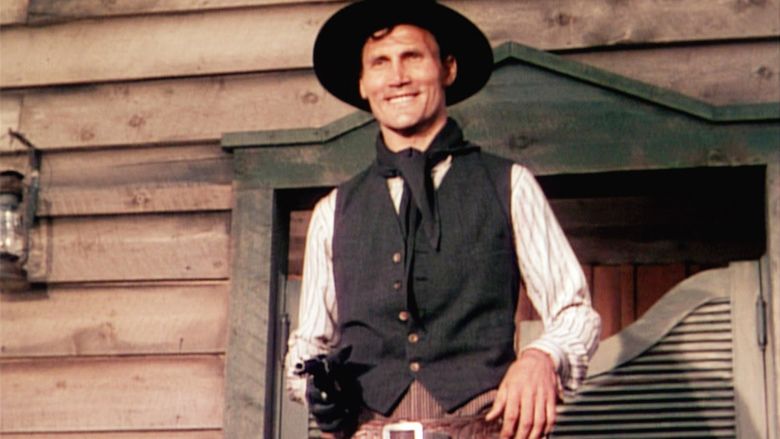
Joey is drawn to Shane, and to his gun. Shane shows him how to wear a holster and demonstrates his shooting skills, but Marian interrupts the lesson. Guns, she says, are not going to be a part of her son's life. Shane counters that a gun is a tool, no better nor worse than an axe or a shovel, and as good or bad as the man using it. Marian retorts that the valley would be better off without any guns—including Shane's.
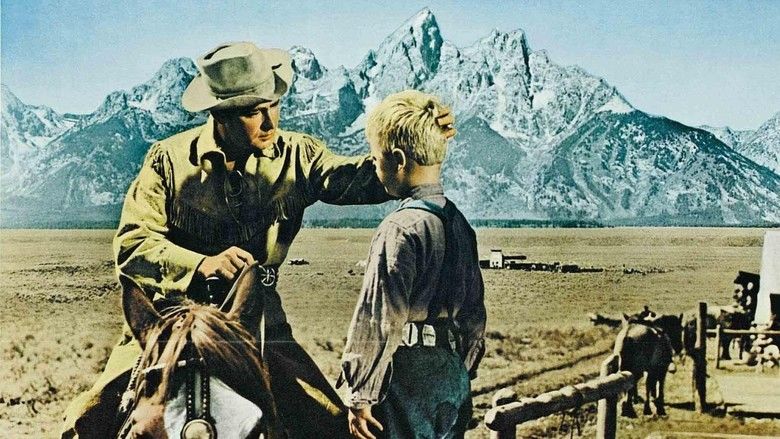
Jack Wilson (Jack Palance), an unscrupulous gunfighter working for Ryker, deliberately provokes Frank "Stonewall" Torrey (Elisha Cook Jr.), a hot-tempered ex-Confederate homesteader. "Them rebs are all Southern trash," Wilson says. "You're a low-down, lyin' Yankee," responds Torrey. "Prove it," Wilson replies. When the inexperienced farmer goes for his gun, Wilson shoots him dead. At Torrey's funeral, there is talk among the settlers of giving in to Ryker and moving on; but after battling a fire set by Ryker's men, they find new determination and resolve to continue the fight.
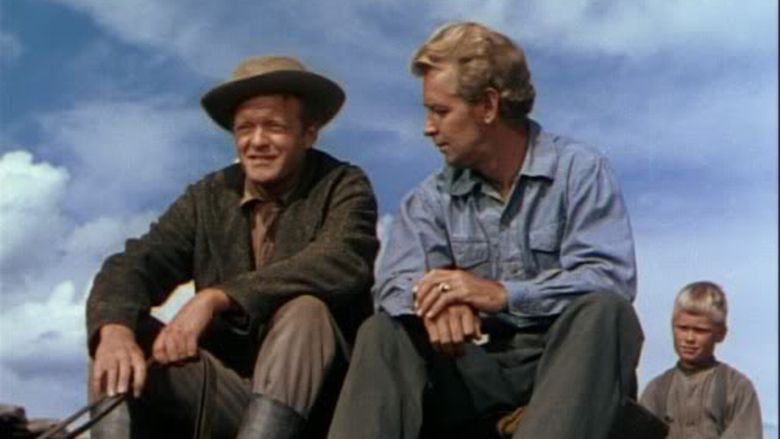
Ryker invites Starrett to a meeting at the saloon to negotiate a settlement—and then orders Wilson to kill him when he arrives. Calloway, unable to tolerate Ryker's treachery any longer, warns Shane of the double-cross. Starrett says no matter, he will shoot it out with Wilson, and asks Shane to look after Marian and Joey if he dies. Shane, aware that Starrett is no match for Wilson in a gunfight, says he must go instead. Starrett is adamant, and Shane is forced to knock him unconscious. A distraught Marian asks Shane why he is doing this. For her, he replies, and her husband and son, and all the other decent people who want a chance to live in peace in the valley.
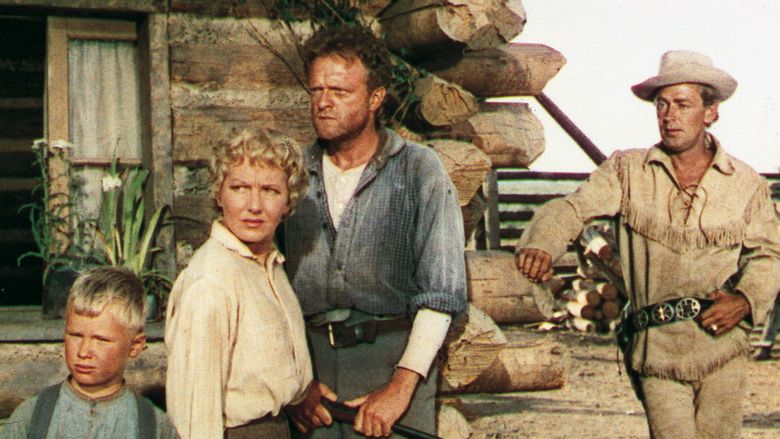
As Shane rides to town, Joey follows him on foot. At the saloon, Shane tells Ryker he cannot prevail, because times have changed; cattle barons and gunfighters are both relics of the Old West. Then he turns to Wilson: "I hear you're a low-down Yankee liar," he says. Wilson, recalling his encounter with Stonewall, replies "Prove it." Shane beats him to the draw, then shoots Ryker too, as he draws a hidden gun. Before Ryker's brother Morgan, concealed in a balcony overhead, can shoot Shane in the back, Joey shouts a warning, and Shane kills Morgan as well.
Shane tells Joey to go home and tell his mother that the settlers have won, that there are no more guns in the valley. As Joey reaches out, blood drips onto his hands; Shane's left arm hangs limply at his side as he mounts his horse. In an iconic closing scene, Shane rides out of town, slumped forward in his saddle, ignoring Joey's desperate cries of "Shane! Come back!"
Production
Director George Stevens originally wanted Montgomery Clift and William Holden for the Shane and Starrett roles; when both proved unavailable, Stevens asked Paramount executive Y. Frank Freeman for a list of available actors with current contracts; within three minutes he chose Alan Ladd, Van Heflin, and Jean Arthur. Shane was Arthur's first cinematic role in five years, and her last, at the age of 50—though she later appeared in theater, and a short-lived television series. She accepted the part at the request of Stevens, who had directed her in The Talk of the Town (1942) and The More the Merrier (1943) for which she received her only Oscar nomination.
Although never explicitly stated, the basic plot elements of Shane were derived from the 1892 Johnson County War in Wyoming, the archetypal cattlemen–homesteaders conflict, which also served as the background for The Virginian and Heaven's Gate. The physical setting is the high plains near Jackson, Wyoming, and many shots feature the Grand Teton massif looming in the near distance. The fictional town and Starrett homestead were constructed for the film near Kelly, in the Jackson Hole valley, and demolished after filming was completed. One vintage structure that appeared briefly in the film, the Ernie Wright Cabin (now popularly referred to by locals as the "Shane Cabin") still stands, but is steadily deteriorating due to its classification as "ruins" by the National Park Service.
Ladd was uncomfortable with guns; Shane's shooting demonstration for Joey required 116 takes. Palance was nervous around horses, and had great difficulty with mounting and dismounting. After many attempts, he finally executed a flawless dismount, which Stevens then used for all of the Wilson character's dismounts and—run in reverse—his mounts as well. Palance looked so awkward on horseback that Stevens was forced to replace Wilson's introductory ride into town astride his galloping horse with Palance on foot, leading the horse. Stevens later noted that the change made Wilson's entrance more dramatic and menacing.
The final scene, in which the wounded Shane explains to a distraught Joey why he has to leave ("There's no living with a killing"), was a moving moment for the entire cast and crew, except Brandon deWilde. "Every time Ladd spoke his lines of farewell, deWilde crossed his eyes and stuck out his tongue. Finally, Ladd called to the boy's father, 'Make that kid stop or I'll beat him over the head with a brick.' DeWilde behaved."
Technical details
Shane was the first film to be projected in "flat" widescreen, a format that Paramount invented in order to offer audiences a wider panorama than television could provide. For its premier, the studio replaced the 34-by-25-foot screen in Radio City Music Hall with one measuring 50 feet wide by 30 feet high. Although the film's image was shot using the standard 1.37:1 Academy ratio, Paramount picked Shane to debut their new wide-screen system because it was composed largely of long and medium shots that would not be compromised by cropping the image. Using a newly cut aperture plate in the movie projector, as well as a wider-angle lens, the film was exhibited in first-run venues at an aspect ratio of 1.66:1. Paramount produced all of its subsequent films at that ratio until 1954, when they switched to 1.85:1. Shane was originally released in April 1953 with a conventional optical soundtrack; but as its popularity grew, a new three-track, stereophonic soundtrack was recorded and played on an interlocking 35mm magnetic reel in the projection booth.
Stevens wanted to demonstrate to audiences "the horrors of violence". To emphasize the terrible power of gunshots, he created a cannon-like sound effect by firing a large-calibre weapon into a garbage can. In addition, he had the two principal shooting victims—Palance and Elisha Cook Jr.—rigged with hidden wires that jerked them violently backward when shot. These innovations, according to film historian Jay Hyams, marked the beginning of graphic violence in Western movies. He quotes Sam Peckinpah: "When Jack Palance shot Elisha Cook Jr. in Shane, things started to change."
Reception
Shane premiered in New York City at Radio City Music Hall on April 23, 1953, and grossed $114,000 in its four weeks there. In all, the film earned $8 million in North America over its initial run.
Bosley Crowther called the film a "rich and dramatic mobile painting of the American frontier scene". He continued:
Shane contains something more than the beauty and the grandeur of the mountains and plains, drenched by the brilliant Western sunshine and the violent, torrential, black-browed rains. It contains a tremendous comprehension of the bitterness and passion of the feuds that existed between the new homesteaders and the cattlemen on the open range. It contains a disturbing revelation of the savagery that prevailed in the hearts of the old gun-fighters, who were simply legal killers under the frontier code. And it also contains a very wonderful understanding of the spirit of a little boy amid all the tensions and excitements and adventures of a frontier home.
Crowther called "the concept and the presence" of Joey, the little boy played by Brandon deWilde, "key to permit[ting] a refreshing viewpoint on material that's not exactly new. For it's this youngster's frank enthusiasms and naive reactions that are made the solvent of all the crashing drama in A. B. Guthrie Jr.'s script."
Woody Allen has called Shane "George Stevens' masterpiece", on his 2001 list of great American films, along with The Treasure of the Sierra Madre, White Heat, Double Indemnity, The Informer and The Hill. Shane, he wrote, "... is a great movie and can hold its own with any film, whether it's a Western or not."
Influence on later works
Shane has spawned numerous imitators, such as Clint Eastwood's Pale Rider, released in 1985.
The 2017 film Logan drew substantial thematic influence from Shane, and formally acknowledged it with a series of specific dialog references and scene clips. As the film ends, Shane's farewell words to Joey are recited, verbatim, at the title character's grave.
Awards and honors
Copyright status in Japan
In 2006 Shane was the subject of litigation in Japan involving its copyright status in that country. Two Japanese companies began selling budget-priced copies of Shane in 2003, based on a Japanese copyright law that, at the time, protected cinematographic works for 50 years from the year of their release. After the Japanese legislature amended the law in 2004 to extend the duration of motion picture copyrights from 50 to 70 years, Paramount and its Japanese distributor filed suit against the two companies. A Japanese court ruled that the amendment was not retroactive, and therefore any film released during or prior to 1953 remained in the public domain in Japan.
References
Shane (film) WikipediaShane (film) IMDb Shane (film) themoviedb.org
